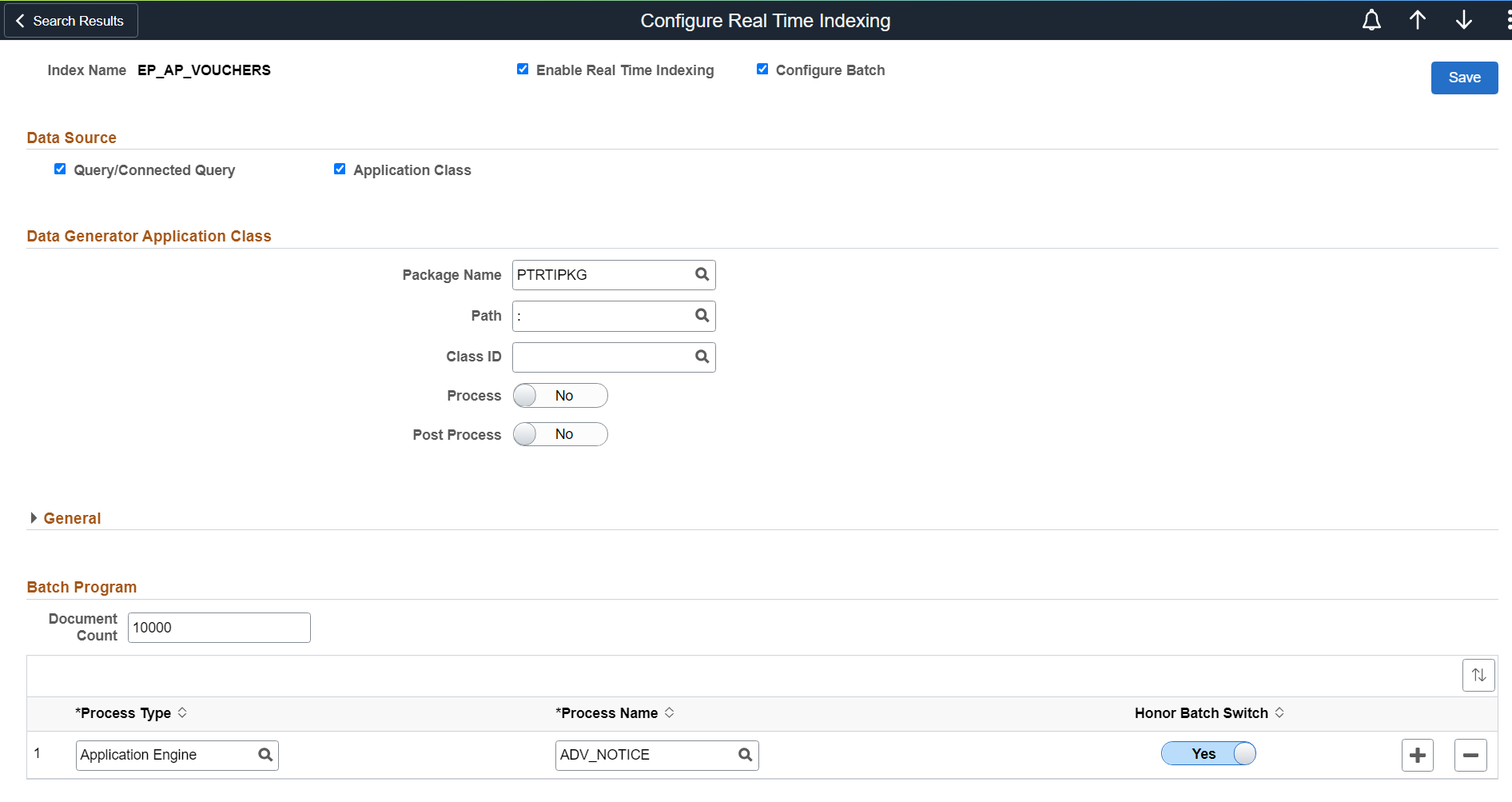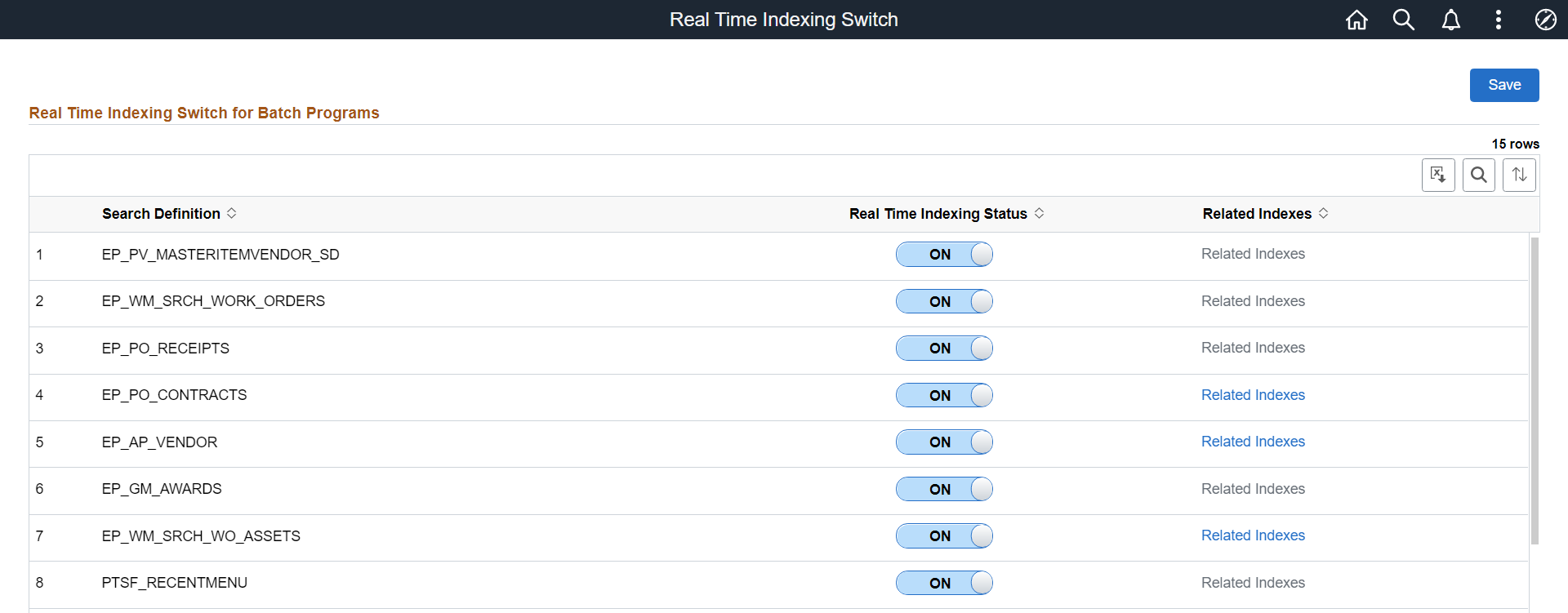PeopleSoft Search Framework uses data that is indexed in the search server for search, analytics, and more. Where applicable Real Time Indexing (RTI) provides the power of accurate and current data for search and analytics use cases. RTI eliminates stale data in search indexes and ensures that discrepancies do not exist between the data in the PeopleSoft database and the indexed data.
Why is a Batch Switch needed during Real Time Indexing?
For search definitions enabled with RTI, high-volume batch updates can cause a sudden spike in the number of entries to process in the RTI added by the database trigger. Therefore, it may take a relatively long time for the data to get updated in the search index. Very large volumes can also cause database table fragmentation to go high and eventually slow down the overall performance.
RTI batch switch would provide an option to the application to turn off RTI for a search definition before initiating high-volume batch updates, and it would be turned ON again automatically during the incremental indexing.
Note: It is not mandatory for all search definitions enabled with RTI to leverage the batch switch. The applications (HCM, FSCM, CS, etc.) will determine if and where there is a need to incorporate this functionality. Similarly, PeopleTools provides the APIs and configuration for customers to leverage the batch switch for any custom search definitions enabled with RTI.
Configure Batch Switch
Batch Switch can be enabled in the RTI configuration page under PeopleTools > Search Framework > Real Time Indexing > Configure Real Time Indexing.

First select the “Configure Batch” checkbox in “Configure Real Time Indexing Page”. Now, under the section “Batch Program” you will be able to provide the list of application engine programs that are candidates for high-volume updates. For an application-delivered RTI with batch configuration, you will see a list of batch programs that are candidates for high-volume updates. You can choose additional batch programs, but they must be coded to use the RTI batch switch using the peoplecode API (see TurnOffRTI).
Note: If you configure batch switch for COBOL or SQR programs, you must perform a direct SQL execution to turn off RTI instead of using the peoplecode API. The flag in record PTSF_RTI_STATUS needs to be updated for the required Search Definition.
Document count as threshold
The document count in the configuration specifies the threshold, post which RTI needs to be turned off. For example, if your threshold configuration is set to 1000 documents, then the batch program can coded to activate the batch switch (TurnOffRTI) only after this threshold is passed.
Please note: The RTI batch configuration should have the Honor Batch Switch option enabled to process the request from the configured AE.
Turning ON RTI is automated
Once RTI is turned off by a configured application program using the batch switch, any transactions happening during this time (online/batch) will not be updated to the search index in real time. Basically, RTI will be switched off or paused temporarily. During this period, incremental indexing will perform the function of catching up on any data changes. Once the configured application program completes processing, the next time incremental indexing runs, it will recognize that the configured program has completed processing and toggle (TurnOnRTI) the batch switch to enable RTI again. This is how the whole process can be automated based on the volume.
Real Time Indexing – Batch Switch Page

This page gives administrators the option to manually toggle (turn on/turn off) RTI, for exception handling and in scenarios where the batch switch could not be automated. Here the toggle button “ON” specifies RTI is already turned on for the given search definition and can be toggled to manually turn it off.
The “Related Indexes” link gives administrators information on other search definitions with common trigger records as the definition in question. This is relevant and important because if two search definitions share the same trigger records, then turning off RTI (temporarily) for one will turn it off for both.
Overall, the RTI batch switch is a powerful option to control RTI in a clean automated manner.
For more information: https://docs.oracle.com/cd/F75887_01/pt860pbr2/eng/pt/tpst/ConfiguringRealTimeIndexing.html
